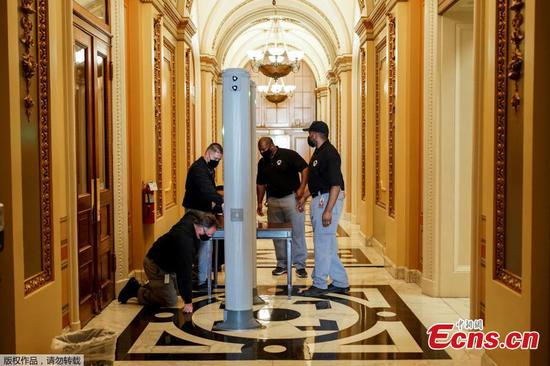Initial jobless claims in the United States soar to 965,000 last week, indicating severe disruption to the labor market recovery by COVID-19 spikes, the Labor Department reported Thursday.
In the week ending Jan. 9, the number of Americans filing for unemployment benefits jumped by 181,000 from the previous week's downwardly revised level of 784,000, according to a report released by the department's Bureau of Labor Statistics (BLS).
The latest report also showed that the number of people continuing to collect regular state unemployment benefits in the week ending Jan. 2 increased by 199,000 to 5.27 million.
Meanwhile, the total number of people claiming benefits in all programs -- state and federal combined -- for the week ending Dec. 26 decreased by 744,511, but remained elevated at 18.4 million, as the country struggles to grapple with the fallout of the surging COVID-19 infections.
As COVID-19 shutdowns rippled through the workforce, initial jobless claims spiked by 3 million to reach a record 3.3 million in the week ending March 21, 2020, and then doubled to reach a record 6.87 million in the week ending March 28.
After that, the figures have been largely declining -- though still at historically high levels -- but the trend was reversed several times amid a resurgence in COVID-19 cases, signaling a stalled recovery in the labor market.
In the week ending Aug. 8, the number of Americans filing for unemployment benefits dropped by 228,000 to 963,000, the first time it has dipped below 1 million since mid-March. Yet just in the following week, the figure rose back above the 1 million mark to reach 1.1. million.
In the week ending Oct. 17, the figure fell below 800,000 for the first time since late March, and has been largely declining in following weeks, but the trend was reversed in the weeks ending Nov. 14 and Nov. 21, and then in the weeks ending Dec. 5 and Dec. 12 amid recent COVID-19 spikes.
A majority of Federal Reserve districts reported that employment rose, although the pace was "slow," and the recovery remained "incomplete," the Federal Reserve said in its latest Beige Book released on Wednesday.
A growing number of districts reported a drop in employment levels relative to the previous reporting period, according to the report, which contains economic reports from 12 Federal Reserve districts, each monitored by a regional Federal Reserve Bank.
"Although the prospect of COVID-19 vaccines has bolstered business optimism for 2021 growth, this has been tempered by concern over the recent virus resurgence and the implications for near-term business conditions," the report said.


















































